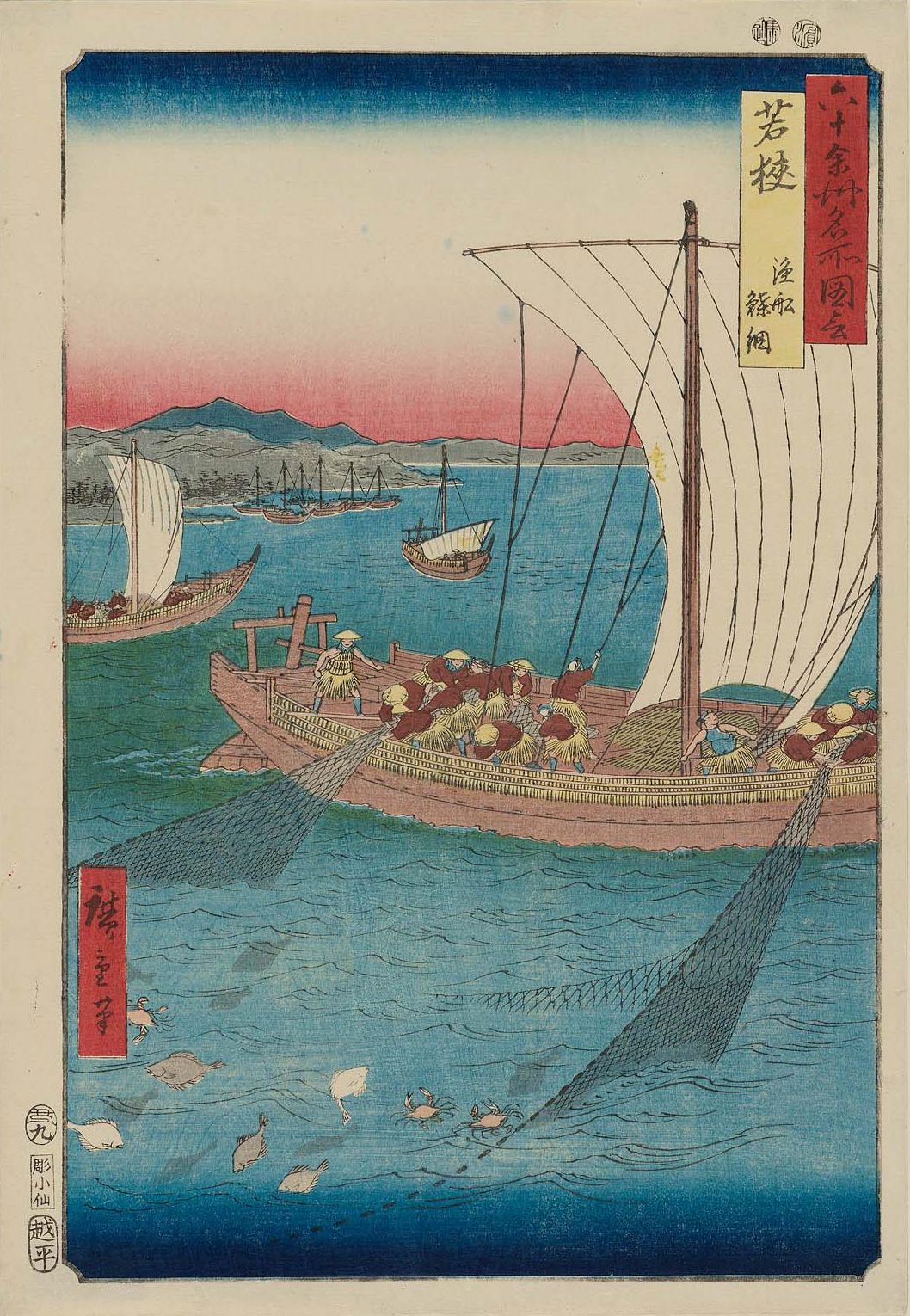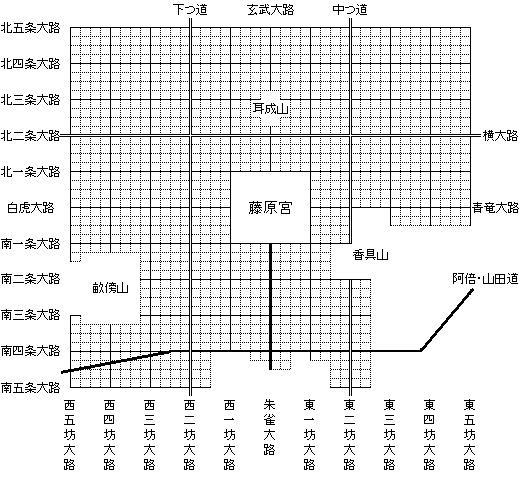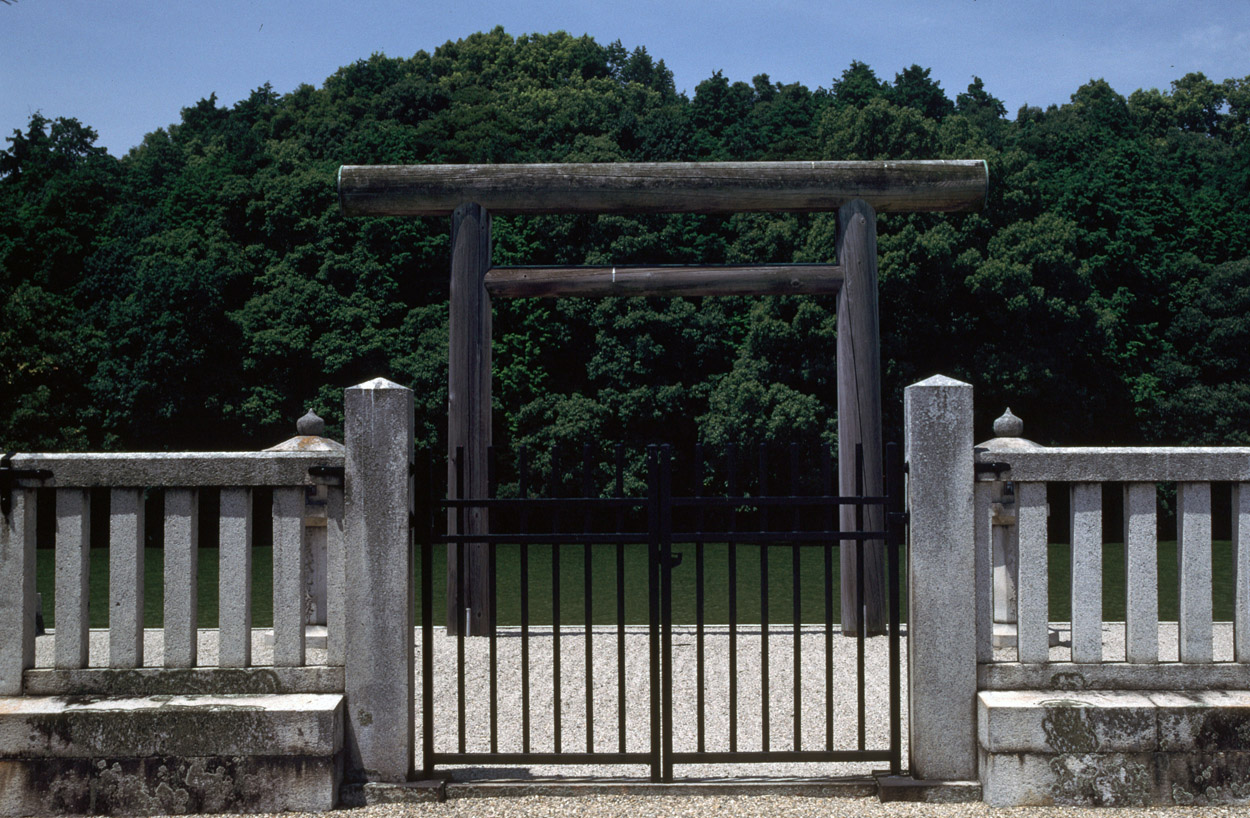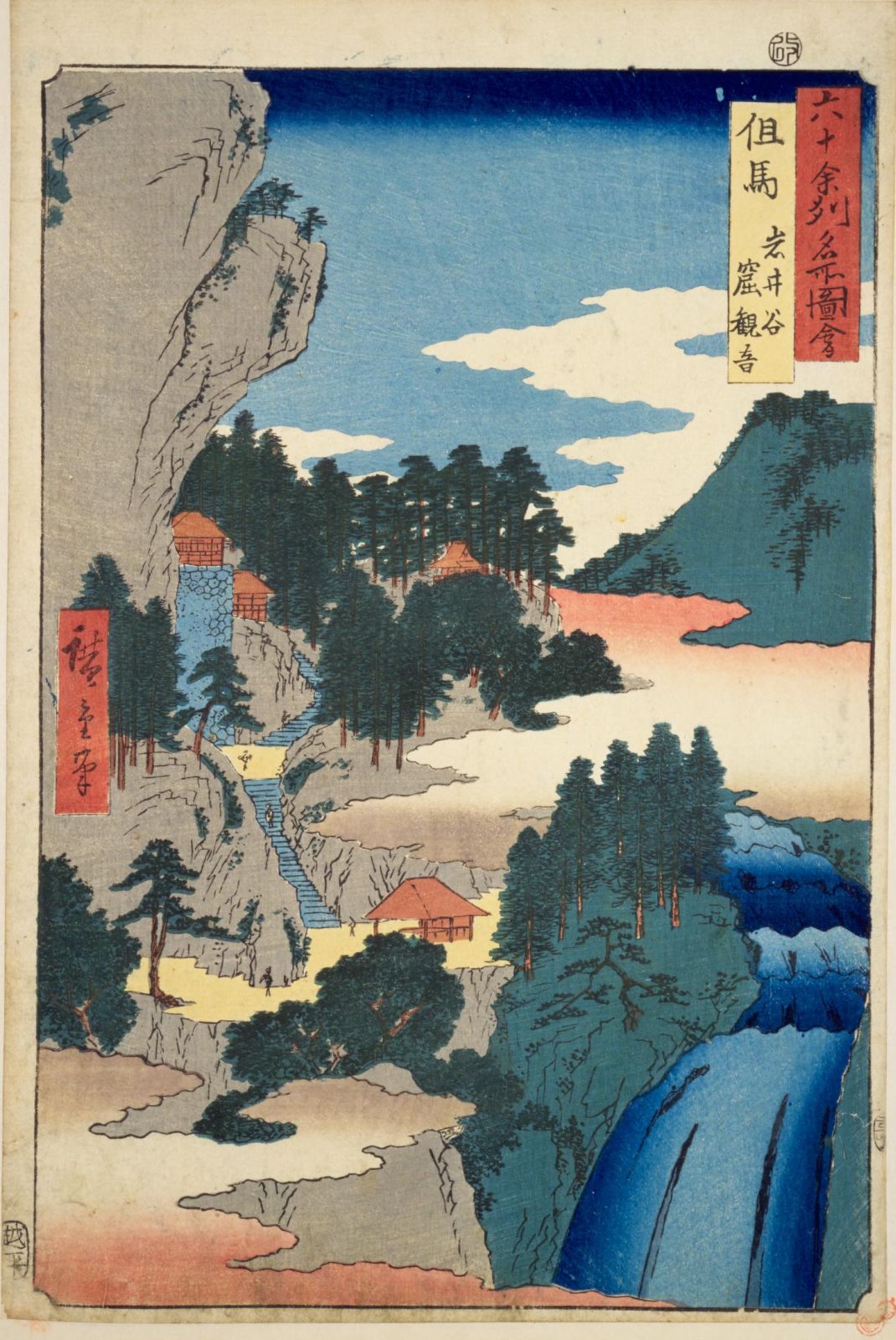|
Wakasa Province
was a province of Japan in the area that is today the southwestern portion of Fukui Prefecture in the Hokuriku region of Japan. Nussbaum, Louis-Frédéric. (2005). "''Wakasa''" in . Wakasa bordered on Echizen, Ōmi, Tanba, Tango, and Yamashiro Provinces. It was part of Hokurikudō Circuit. Its abbreviated form name was . Under the ''Engishiki'' classification system, Wakasa was ranked as a "medium country" (中国) and a near country (近国) in terms of its importance and distance from the capital. History Ancient and classical Wakasa Wakasa existed as a political entity before the ''Ritsuryō'' system and the implementation of the Taihō Code of the Nara period. Wooden shipping tags labelled "Wakasa" have been found in the ruins of Fujiwara-kyō. Per the '' Nihon Shoki'', ancient Wakasa was governed by a Kuni no miyatsuko, who was a descendant of Amenohiboko, a semi-legendary prince of Shilla, who settled in Tajima province during the reign of Emperor Suinin. There are ... [...More Info...] [...Related Items...] OR: [Wikipedia] [Google] [Baidu] |
Provinces Of Japan
were first-level administrative divisions of Japan from the 600s to 1868. Provinces were established in Japan in the late 7th century under the Ritsuryō law system that formed the first central government. Each province was divided into and grouped into one of the geographic regions or Circuit (administrative division), circuits known as the ''Gokishichidō'' (Five Home Provinces and Seven Circuits). Provincial borders often changed until the end of the Nara period (710 to 794), but remained unchanged from the Heian period (794 to 1185) until the Edo period (1603 to 1868). The provinces coexisted with the ''Han system, han'' (domain) system, the personal estates of feudal lords and warriors, and became secondary to the domains in the late Muromachi period (1336 to 1573). The Provinces of Japan were replaced with the current Prefectures of Japan, prefecture system in the ''Fuhanken sanchisei'' during the Meiji Restoration from 1868 to 1871, except for Hokkaido, which was For ... [...More Info...] [...Related Items...] OR: [Wikipedia] [Google] [Baidu] |
Fujiwara-kyō
was the Imperial capital of Japan for sixteen years, between 694 and 710. It was located in Yamato Province (present-day Kashihara, Nara, Kashihara in Nara Prefecture), having been moved from nearby Asuka, Yamato, Asuka. However, the name Fujiwara-kyō was never used in the ''Nihon Shoki''. During those times it was recorded as Aramashi-kyō (新益京). As of 2006, ongoing excavations have revealed construction on the site of Fujiwara-kyō as early as 682, near the end of the reign of Emperor Tenmu. With a brief halt upon Emperor Tenmu's death, construction resumed under Empress Jitō, who officially moved the capital in 694. Fujiwara-kyō remained the capital for the reigns of Emperor Monmu and Empress Genmei, but in 710 the Imperial court moved to the Heijō Palace in Nara, Nara, Nara, beginning the Nara period. History Fujiwara was Japan's first capital built in a grid pattern on the Chinese model (条坊制 ''jōbō-sei''); recent investigation has revealed that the city c ... [...More Info...] [...Related Items...] OR: [Wikipedia] [Google] [Baidu] |
Konbu
''Konbu'' (from ja, 昆布, konbu or kombu) is edible kelp mostly from the family Laminariaceae and is widely eaten in East Asia. It may also be referred to as ''dasima'' ( ko, 다시마) or ''haidai'' (). Kelp features in the diets of many civilizations, including Chinese and Icelandic; however, the largest consumers of kelp are the Japanese, who have incorporated kelp and seaweed into their diets for over 1,500 years. Prominent species There are about eighteen edible species in Laminariaceae and most of them, but not all, are called kombu. Confusingly, species of Laminariaceae have multiple names in biology and in fisheries science. In the following list, fisheries science synonyms are in parentheses, and Japanese names follow them. * ''Saccharina japonica'' (''Laminaria japonica''), * ''Saccharina japonica'' var. ''religiosa'' (''Laminaria religiosa''), * ''Saccharina japonica'' var. ''diabolica'' (''Laminaria diabolica''), l * ''Saccharina japonica'' var. ''ochotensis ... [...More Info...] [...Related Items...] OR: [Wikipedia] [Google] [Baidu] |
Heian Period
The is the last division of classical Japanese history, running from 794 to 1185. It followed the Nara period, beginning when the 50th emperor, Emperor Kanmu, moved the capital of Japan to Heian-kyō (modern Kyoto). means "peace" in Japanese. It is a period in Japanese history when the Chinese influences were in decline and the national culture matured. The Heian period is also considered the peak of the Japanese imperial court and noted for its art, especially poetry and literature. Two types of Japanese script emerged, including katakana, a phonetic script which was abbreviated into hiragana, a cursive alphabet with a unique writing method distinctive to Japan. This gave rise to Japan's famous vernacular literature, with many of its texts written by court women who were not as educated in Chinese compared to their male counterparts. Although the Imperial House of Japan had power on the surface, the real power was in the hands of the Fujiwara clan, a powerful aristocratic f ... [...More Info...] [...Related Items...] OR: [Wikipedia] [Google] [Baidu] |
Ōi District, Fukui
is a district located in Fukui Prefecture, Japan. As of 2003, the district had an estimated population of 18,680 and a density Density (volumetric mass density or specific mass) is the substance's mass per unit of volume. The symbol most often used for density is ''ρ'' (the lower case Greek letter rho), although the Latin letter ''D'' can also be used. Mathematical ... of 133.18 persons per km2. The total area is 140.26 km2. Towns and villages * Ōi * Takahama Merger *On March 3, 2006 the village of Natashō, from Onyū District, merged into the town of Ōi. Districts in Fukui Prefecture {{Fukui-geo-stub ... [...More Info...] [...Related Items...] OR: [Wikipedia] [Google] [Baidu] |
Mikata District, Fukui
is a district located in Fukui Prefecture, Japan. As of October 1, 2005, the district has an estimated population of 11,023 and a density Density (volumetric mass density or specific mass) is the substance's mass per unit of volume. The symbol most often used for density is ''ρ'' (the lower case Greek letter rho), although the Latin letter ''D'' can also be used. Mathematical ... of 72.37 persons per km2. The total area is 152.32 km2. Towns and villages * Mihama Merger *On March 31, 2005 the town of Mikata merged with the town of Kaminaka (from Onyū District), forming the new town of Wakasa (in the newly created Mikatakaminaka District). Districts in Fukui Prefecture {{Fukui-geo-stub ... [...More Info...] [...Related Items...] OR: [Wikipedia] [Google] [Baidu] |
Onyū District, Fukui
was a district located in Wakasa Province (now Fukui Prefecture), Japan until 2005. The time before the dissolution, the district had an area of 143.83 km2 with an estimated population of 2,747 with an area of 1,088 and a density of 49.08 persons per square kilometer. The total area is 225.91 km2. The district ended up with only one village: * Natashō Mergers *On March 31, 2005 - the town of Kaminaka was merged with the town of Mikata (from Mikata District) to create the town of Wakasa (now in Mikatakaminaka District). (1 village) *On March 3, 2006 - the village of Natashō was merged into the expanded town of Ōi (in Ōi District). Onyū District was dissolved as a result of this merger. References See also *List of dissolved districts of Japan A district of Japan is dissolved when all towns or villages in the district become cities or are merged into the city. The following is a list of dissolved districts of Japan. The date shown is the day the distri ... [...More Info...] [...Related Items...] OR: [Wikipedia] [Google] [Baidu] |
Districts Of Japan
In Japan, a is composed of one or more rural municipalities (Towns of Japan, towns or Villages of Japan, villages) within a Prefectures of Japan, prefecture. Districts have no governing function, and are only used for geographic or statistical purposes such as mailing addresses. Cities of Japan, Cities are not part of districts. Historically, districts have at times functioned as an administrative unit in Japan, administrative unit. From 1878 to 1921The governing law, the district code (''gunsei'', 郡制Entry for the 1890 originalanentry for the revised 1899 ''gunsei''in the National Diet Library ''Nihon hōrei sakuin''/"Index of Japanese laws and ordinances"), was abolished in 1921, but the district assemblies (''gunkai'', 郡会) existed until 1923, the district chiefs (''gunchō'', 郡長) and district offices (''gun-yakusho'', 郡役所) until 1926. district governments were roughly equivalent to a County (United States), county of the United States, ranking below Prefectu ... [...More Info...] [...Related Items...] OR: [Wikipedia] [Google] [Baidu] |
Yamato State
The was a tribal alliance centered on the Yamato region (Nara Prefecture) from the 4th century to the 7th century, and ruled over the alliance of noble families in the central and western parts of the Japanese archipelago. The age is from the 4th to the 7th century, later than the Yamatai Kingdom. After the Taika Reform, the ōkimi as an emperor, at that time, was in power, and the Yamato period ended. The time period is archaeologically known as the Kofun period. Regarding its establishment, due to the relationship between Yamatai and Yamato's succession to the king's power, there are very different views on it. The Yamato Kingship refers to the regime that emerged in the Nara region ( Yamato region) since the 4th century. But the term does not imply the origin of Japan, which is disputed in Japanese history. At the same time as the rise of the , there were probably several or even dozens of power centers in the Japanese archipelago. This is an issue that Japanese academia ... [...More Info...] [...Related Items...] OR: [Wikipedia] [Google] [Baidu] |
Emperor Suinin
, also known as was the 11th legendary Emperor of Japan, according to the traditional order of succession. Less is known about ''Suinin'' than his father, and likewise he is also considered to be a "legendary emperor". Both the ''Kojiki'', and the ''Nihon Shoki'' (collectively known as the ''Kiki'') record events that took place during Suinin's alleged lifetime. This legendary narrative tells how he ordered his daughter Yamatohime-no-mikoto to establish a new permanent shrine for Amaterasu (the Sun Goddess), which eventually became known as the Ise Grand Shrine. Other events that were recorded concurrently with his reign include the origins of Sumo wrestling in the form of a wrestling match involving Nomi no Sukune. Suinin's reign is conventionally considered to have been from 29 BC to AD 70. During his alleged lifetime, he fathered seventeen children with two chief wives (empress) and six consorts. One of his sons became the next emperor upon his death in 70 AD, but the locati ... [...More Info...] [...Related Items...] OR: [Wikipedia] [Google] [Baidu] |
Tajima Province
was a province of Japan in the area of northern Hyōgo Prefecture. Tajima bordered on Tango and Tanba to the east, Harima to the south, and Inaba to the west. Its abbreviated form name was . In terms of the Gokishichidō system, Tajimao was one of the provinces of the San'indō circuit. Under the ''Engishiki'' classification system, Tajima was ranked as one of the "superior countries" (上国) in terms of importance, and one of the "near countries" (近国) in terms of distance from the capital. The provincial capital was located in what is now the city of Toyooka. The ''ichinomiya'' of the province is the Izushi Shrine also located in Toyooka. The area of the province was 2099.01 square kilometers. History Early history The early history of the Tajima region is uncertain. There appear to have been two power centers. The Tajima ''Kuni no miyatsuko'' ruled in eastern Tajima (present-day Asago District and Yabu District) and are mentioned in the ''Kujiki''. They tenuously ... [...More Info...] [...Related Items...] OR: [Wikipedia] [Google] [Baidu] |
Silla
Silla or Shilla (57 BCE – 935 CE) ( , Old Korean: Syera, Old Japanese: Siraki2) was a Korean kingdom located on the southern and central parts of the Korean Peninsula. Silla, along with Baekje and Goguryeo, formed the Three Kingdoms of Korea. Founded by Hyeokgeose of Silla, of the Park family, the Korean dynasty was ruled by the Gyeongju Gim (Kim) (김, 金) clan for 586 years, the Miryang Bak (Park) (박, 朴) clan for 232 years and the Wolseong Seok (석, 昔) clan for 172 years. It began as a chiefdom in the Samhan confederacies, once allied with Sui China and then Tang China, until it eventually conquered the other two kingdoms, Baekje in 660 and Goguryeo in 668. Thereafter, Unified Silla occupied most of the Korean Peninsula, while the northern part re-emerged as Balhae, a successor-state of Goguryeo. After nearly 1,000 years of rule, Silla fragmented into the brief Later Three Kingdoms of Silla, Later Baekje, and Taebong, handing over power to Goryeo in 935. ... [...More Info...] [...Related Items...] OR: [Wikipedia] [Google] [Baidu] |







